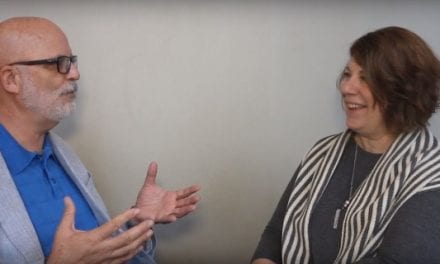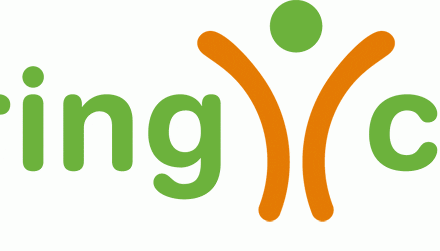Emails. Whether you love them or hate them, there are few marketing tools with more potential, but also more misuse, than email.
By Susan Saldibar
Emails. Whether you love them or hate them, there are few marketing tools with more potential, but also more misuse, than email. That’s a shame because, when handled correctly, emails can drive home business. Big time.
In the senior living market, emails can be very effective in building your future community. By taking some time and effort on the front end, you can build a process that, to the recipient, appears to be anything but machine-like.
Is it possible? Is it affordable?
The answer to both questions is an emphatic “yes”, according to Tom Goldman, COO of SoftVu, a Senior Housing Forum Partner. “But only with the right platform,” says Tom. “You need to know as much as possible about the potential residents and their families that live within your community’s reach, as well as their living situations,” he adds. And today, with the availability of ‘big’ data and the technology to parse that data more effectively, you can get an amazing amount of detail without any of the ‘creepiness’ factor, and couple it with an automated marketing platform to keep your costs down.
“It’s one thing to market to a couple in their sixties with an elderly mom in the house,” says Tom, “but what if you also knew that there is a mobility or specific medical issue,” he adds. “What would that tell you about their situation and how would it change your message?” That’s the thinking behind a “smart” email. The best way to illustrate it is to share a couple examples:
A: “Not-So-Smart” Senior Care Community has an email list which is segmented, but only to the point of targeting people aged 60 or older within a 50 mile radius of their community. Here’s their approach:
Subject: Special event at Moonridge Senior Living
Are you looking into senior living communities for your mom or dad? Now, even if you don’t yet have a need, is a great time to visit Moonridge. Every Wednesday evening we have our ice cream social and we invite you to come and see for yourself how senior living can be. You can even bring your parent along and enjoy one of our favorite events.
This email attempts to include the characteristics of every possible situation in one email. Not good. They don’t know if the recipient has a living parent or what the urgency of need might be. So they cast a wide net with a very generic email which will probably not even get opened.
B: “Smart” Senior Living Community has access to a robust database, with opt-in recipients (meaning they have requested information about senior living), that has been segmented or appended with a high degree of granularity. They know that this recipient is over 60-years-old with an older parent living with them. They also now know that a wheel chair was recently purchased. So here’s the appropriate message.
Subject: When Mom or Dad Loses Mobility
As our parents grow older, one of our greatest concerns is the loss of their mobility. At some point a walker may be needed; then a wheel chair. At Woodbridge, we understand how life altering the loss of mobility can be, not only for the senior parent, for the entire family. We are not just your local senior community that is here whenever you might need us, but we’re also your local expert in all matters related to aging care and are happy to answer questions and offer advice.
We’ve prepared a special checklist “How to Deal With a Parent’s Loss of Mobility,” which you can download here. We also invite you to attend our seminar on the same topic on October 20th. Just offering information, no sales pitch [with links for checklist download or seminar sign up].
This email stands a good chance of getting opened, read and remembered. It is closely aligned to the needs of the recipient and will be sent to a smaller subset of the database. It offers help and expertise, building trust and brand in the process, without being “sales-y.”
Smart emails match the messaging as closely as possible to the recipient’s current situation. “Many not-so-great leads will fall by the wayside,” says Tom. “But that’s okay. Ultimately you want to be managing a smaller, more tailored list of high quality leads. Not a huge list of poor quality leads,” he adds. In short, you want to be the first place someone goes when they find themselves in need, not to a search engine on the web.
How to Get Started
Here’s what Tom recommends:
- Locate a list provider with a “smart” database.
Smart means just that. They should have the depth of data and tools to be able to parse it into highly granular sets of criteria, which is sortable. Also make sure that recipients are truly “opt in.” “What many people don’t realize is that just one bad list can get you into big trouble,” says Tom. “If you get enough people labeling your emails as ‘spam’ you can get blacklisted, which can basically shut down your ability to send emails. And that, is something you want to avoid at all costs,” he added. - Segment your lists into near-term and long-term prospects. Your messaging will be different, depending on whether the need is more or less urgent.
- Custom tailor messaging for each group. Make sure the language you use reflects the language the family is speaking. “For long-term prospects your emails might address ‘thinking about’ finding a community, for short-term, your emails might address things such as ‘when your mom falls’ and more urgent issues,” says Tom.
- Make sure that your messaging positions you as the subject matter expert. Branding is key. “You want to be viewed as a trusted advisor in your local area,” says Tom. “While this does take some time to get traction, it’s the right kind of traction because it builds a long term kind of trust with your potential future residents and their families.”
- Devise a schedule and automate the creation and distribution of your emails. You can create emails with highly personal themes and use technology to deliver them on time, every time. “Just because your messaging is personal doesn’t mean you have to hand-deliver each email,” says Tom. “Use good marketing automation tools to keep your costs down and activity up.”
In the end, the goal of a smart email program is to have your prospects coming straight to your door when they have a need. “If your prospects are going online and searching about senior care issues instead of reaching out to you, then you probably have room to improve,” he adds. “On the other hand, if you find yourself managing a waitlist and not a lead list, you are probably doing it right.”








